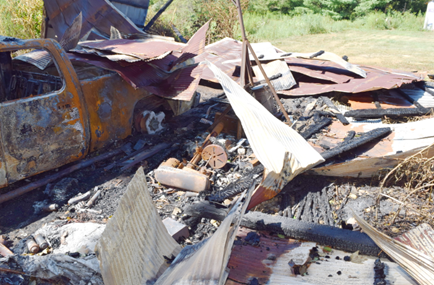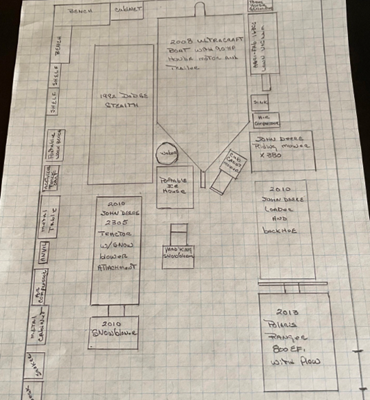How do you determine how to identify and handle evidence?
The National Fire Protection Association (NFPA) 921 sets the standard for scientific-based fire and explosion investigations. NFPA 921 is updated every three years and is referenced by professionals in the field, during training, and in court.
ASTM International is another organization that develops voluntary consensus technical standards for a wide range of materials, products, systems, and services.

How do you determine how to identify and handle evidence? - Continued
Several sections of the ASTM reference fire evidence of various types and should be referred to during fire studies:
- ASTM E860: Examining and Preparing Items That Are or May Become Involved in Criminal or Civil Litigation
- ASTM E1188: Standard Practice for Collection and Preservation of Information and Physical Items by a Technical Investigator
- ASTM E1459: Standard Guide for Physical Evidence Labeling and Related Documentation
- ASTM E1492: Standard Practice for Receiving, Documenting, Storing, and Retrieving Evidence in a Forensic Science Laboratory
What constitutes evidence in a fire investigation?
Evidence in these investigations includes but is not limited to appliances, potentially ignitable liquids, fire debris, gaseous samples, vehicles, equipment, and anything that could be tested for ignitable liquid residue. Physical evidence, defined generally, is any physical or tangible item that tends to prove or disprove a particular fact or issue. Physical evidence at the fire scene may be relevant to the issues of the origin, cause, spread, or the responsibility for the fire. (NFPA 921 – 17.2.1)


How do you collect/remove evidence from a fire scene?
Physical evidence can be collected in evidence cans, shrink wrap, resealable bags, trash bags, etc., and can be secured with tape, ratchet strips, or bungee cords. No matter how it is preserved, it is important that it is properly documented and that all interested parties are notified to avoid spoliation.
What is spoliation of evidence, and how can it affect a claim?
NFPA 12.3.5 defines spoliation of evidence as the loss, destruction, or alteration of an object or document that is evidence or potential evidence in a legal proceeding. Spoliation can occur when these conditions at the scene impair the opportunity other interested parties have to obtain the same evidence as any prior investigator.


What steps do you take to protect evidence?
Evidence at the property can be vulnerable to disturbance by unauthorized personnel, weather, and potential theft. Steps to protect evidence may include posting a sentry and/or signage at the fire scene, securing doors and windows, securing openings with tarps or sheathing, and fencing the fire scene.
What if evidence is needed after restoration efforts are underway?
Documentation is important at every stage of the investigation, and evidence should be carefully preserved for future study if indicated. A 3D imaging scan of the site can also be indispensable since you can view the scene even after restoration efforts.

What benefits does a 3D scan provide?
A 3D scan adds value and permanence to onsite investigations by capturing the scene as it is the day of the inspection. You can see what the fire investigator sees without leaving your desk. These scans alleviate spoliation concerns and provide excellent documentation for subrogation.
Those Are the Basics, but…
Obviously, there’s a lot more to fire investigation and evidence management than a few lines can cover. The National Fire Experts team has a wide range of expertise, innovative tools, and assistance from professional engineers. Whether they’re investigating a small appliance fire or a large industrial explosion, our fire investigators adhere to NFPA and ASTM guidelines and standards. They utilize the scientific method and industry best practices to reach superior insights. Learn how our expert investigation and documentation can provide you with answers you can trust.
